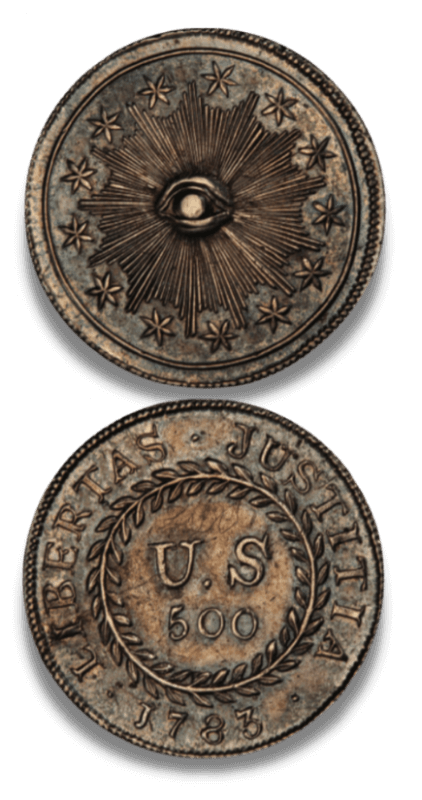
Within hours of receiving the news that the Revolutionary War had been won, the United States ordered its first coin to be struck.
On Sunday, March 23, 1783, a French naval cutter made its way up the Delaware River, dropping anchor south of Independence Hall in Philadelphia. The aptly named Le Triomphe had set sail from Cadiz 36 days earlier, carrying news that Great Britain recognized the sovereignty of the United States. American independence had become a reality.

Over the next few hours, United States Secretary of Foreign Affairs Robert Livingston, General Horatio Gates and other luminaries visited Morris’s office to discuss the day’s events. Morris then attended to “Various Applications for Money, Notes, Advice, Opinions &ca. &ca.”
The final item in Morris’s diary on March 24—the first day that the U.S. government operated with the knowledge that the Revolutionary War had been won—may be our nation’s first sovereign act. Before leaving his office to attend one of the celebrations held that evening, the superintendent of finance recorded that he had “Issued a Warrant on Mr. Swanwick in favor of B. Dudley £3.0.0.”
“B. Dudley” refers to Benjamin Dudley, a mechanic who had been hired by the United States to construct a mint for the new government, and the modest sum of £3 (the equivalent of eight Spanish silver dollars) was the final payment made to him before he delivered what Morris described in his diary as “the first that has been struck as an American Coin.”
Put simply, within 24 hours of learning that Great Britain recognized America’s independence, the man running the United States apparently ordered a government employee to strike the first U.S. coin.
[Pictured: THE 1783 PLAIN OBVERSE NOVA CONSTELLATIO—the coin that Robert Morris described as “the first that has been struck as an American Coin”—was integral in establishing the system of money that we use to this day. Photos: PCGS COINFACTS.]